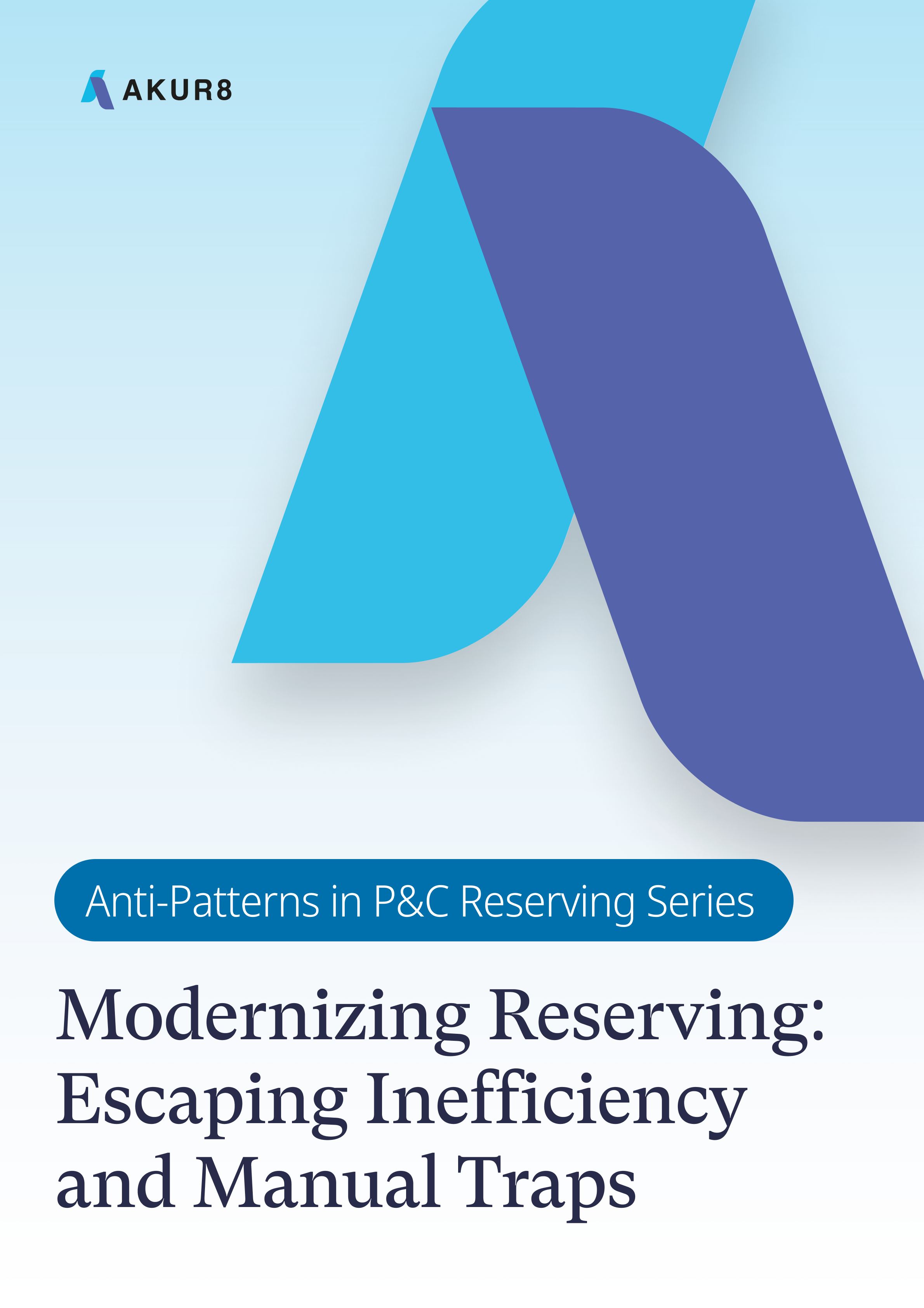The Benefits of Automation in Loss Reserving


Each reporting period, far too much of actuaries’ time is spent performing routine tasks like adding or deleting diagonals from loss triangles, dragging and dropping formulas, relinking a complicated web of spreadsheets, and then checking that all the templates are up to date, in sync, and consistent.
With hundreds of diagnostics feeding through dozens of data triangles, an incremental change, even to just one or two projects, makes updates much riskier in the next period. With barely enough time to complete the essential regulatory and financial requirements, actuaries are often forced to sidestep deep dives that could uncover subtle inconsistencies and rush through estimates that merely pass as “good enough.”
All these manual operations result in a misuse of valuable resources on admittedly important but repetitive tasks, discouraging change and innovative analysis that can shed light onto an insurer’s risks.
At the same time, regulatory and market forces have raised the bar on the level of sophistication expected in insurers’ analyses.
Automating the reserving process enables actuaries to dedicate more time to delivering meaningful value within the insurance organization. Instead of spending effort on manual tasks, actuaries can concentrate on spotting trends, investigating anomalies, performing deeper analytical reviews, and applying their actuarial expertise to interpret and enhance the insights produced.
Automation tools can free actuaries from the monotonous drag-and-drop routines involved in updating a morass of spreadsheets. Most, if not all, repetitive tasks that reserving actuaries perform each period can and should be replaced by automated processes.
Automation of these processes would allow actuaries to effectively list repetitive tasks into a script, select the projects on which the script needs to run, click a button, and then move on to other productive analysis while the script runs.
When process automation is paired with standardized templates across reserve analyses, the benefits compound. Updates made in master templates can cascade automatically to related projects and spreadsheets, eliminating redundant work. This not only speeds up the workflow but also minimizes the risk of human error in calculations that may number in the tens of thousands, and where mistakes can have significant downstream consequences. By automating repetitive tasks, reserving teams can dramatically improve accuracy and scalability.
On the front end, automation can be greatly beneficial in streamlining the labor-intensive job of generating loss triangles. This includes ensuring the triangles are adjusted, reconciled, and readily available for analysis. Data loading for a new period, along with the first selection of key reserving assumptions (such as a priori and initial selections), can also be automated.
This automation would give actuaries a head start, providing an initial set of results and actual-to-expected analyses without the need for manual updates, accelerating the transition to deeper analytical work.
On the back-end, automation should make it simple to retrieve data from each reserving segment and provide the ability to feed downstream reporting systems, technical reports, or interactive dashboards. Instead of spending time ensuring spreadsheets remain “live” and links are current, actuaries can rely on automated updates that deliver the latest data across all segments instantly and on demand.
It’s no mystery: the more person-hours we can save from rudimentary tasks, the more hours actuaries can devote to better understanding their insurers’ risks and providing useful intelligence. Automation of the reserving process can undoubtedly drive substantial gains in accuracy, efficiency, and reliability and, perhaps more importantly, elevate the visibility of the reserving actuaries as productive business advisors.

